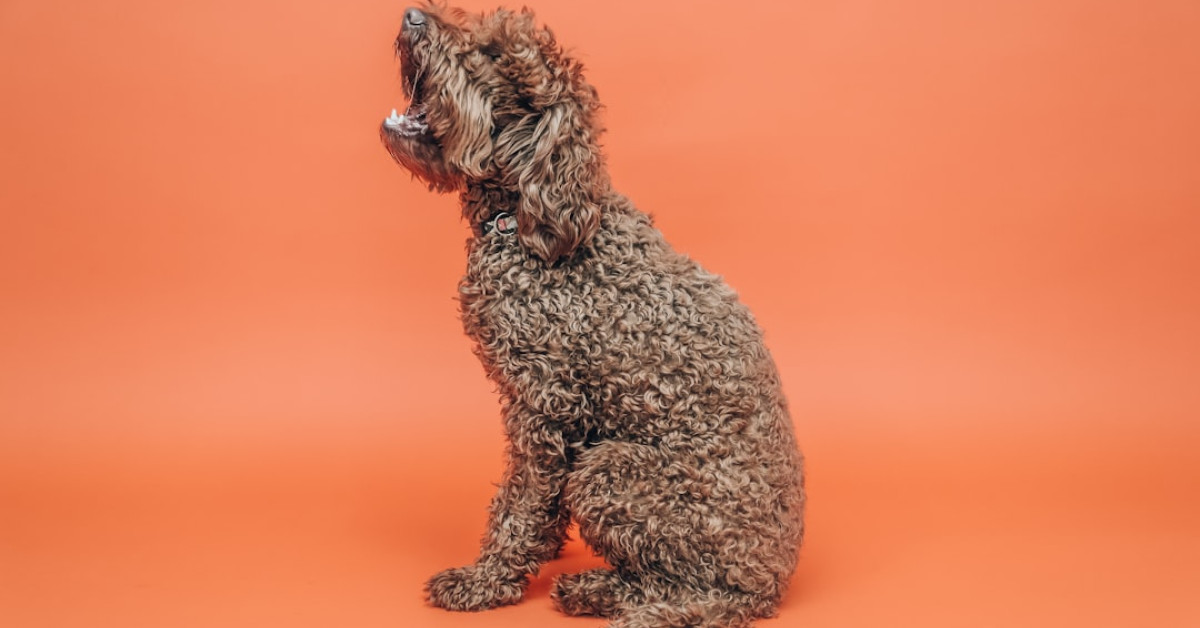Introduction: My Love for Poodle Mixes
You know, I’ve always had a soft spot for dogs. Ever since my childhood, when I had a Golden Retriever named Max, who used to run around our yard with reckless abandon. Max was great, but once I stumbled upon Poodle mixes—or “doodle” breeds as some call them—I was hooked. These pups have an undeniable charm, intelligence, and hypoallergenic coats that make them irresistible for many dog lovers like me. Today, I’d like to introduce you to one of the most intriguing Poodle mixes: the Pyredoodle, a cross between the Great Pyrenees and the Poodle.
What is a Pyredoodle?
A Pyredoodle, also known as a Pyreneesdoodle or Pyrpoo, is an intriguing hybrid breed derived from crossing a Great Pyrenees with a Poodle. These remarkable dogs come in various sizes and tend to inherit the best traits from both parent breeds. A Pyredoodle typically has the intelligence and low-shedding coat of a Poodle, combined with the loyalty, guardian instincts, and calm demeanor of a Great Pyrenees.
Appearance: A Royal Look
When it comes to appearance, Pyredoodles are a sight to behold. They often have a soft, fluffy coat that’s either curly or wavy. Their coat comes in various colors, including white, cream, black, and even a mix of shades. These dogs usually have a sturdy, muscular build, with an elegant posture that makes them look almost regal.
I remember the first time my neighbor, Mrs. Thompson, brought her Pyredoodle puppy, Bella, to my clinic. Bella had these mesmerizing amber eyes and a playful fluff ball coat that made everyone in the waiting room smile. She was basically the canine version of a teddy bear!
Temperament: The Gentle Guardian
Pyredoodles are known for their balanced temperament. They inherit the calm, protective nature of the Great Pyrenees and the social, playful spirit of the Poodle. These dogs make excellent family pets; they’re great with kids and generally get along well with other animals.
One common trait among Pyredoodles is their keen sense of loyalty and protective instincts. They’ll stand by your side through thick and thin. My friend Emily swears that her Pyredoodle, Zeus, always knows when she’s feeling down and never leaves her side until she’s smiling again.
Health: Common Concerns and Solutions
Like any breed, Pyredoodles have their share of health concerns. They’re generally healthy dogs, but they’re not entirely free from genetic conditions. Hip dysplasia, elbow dysplasia, and certain eye conditions can be a concern. Regular vet check-ups and a healthy diet are essential to keep these issues at bay.
I can’t stress enough the importance of routine health screenings. I recall a case where a Pyredoodle named Rex was brought in for what seemed like minor limp. Turns out, it was an early sign of hip dysplasia. Catching it early made all the difference in managing the condition effectively.
Grooming: Not As Tricky As You Think
One of the stellar features of the Pyredoodle is its relatively low-shedding coat. This makes them a popular choice for people with allergies. However, their coat does require regular grooming to keep it in top shape.
Brushing their fur a few times a week should help prevent matting and keep their coat looking splendid. Bathing them once a month (or as needed) and regular nail trims round out their grooming needs. And trust me, being consistent with grooming care is important. I once had a client bring in their Pyredoodle, Maxie, who was so matted that we ended up having to shave her fur completely. Don’t be the person with the matted pup!
Training: Smart and Eager to Learn
Pyredoodles are intelligent and eager to please, making them relatively easy to train. However, they do have a stubborn streak, inherited from the Great Pyrenees side. Consistent training using positive reinforcement methods generally yields the best results.
Obedience training is key, especially since these dogs can grow quite large. A well-trained Pyredoodle is not only a joy to be around but also ensures they’re safe and manageable. A friend of mine, Jake, used to joke that his untrained Pyredoodle, Luna, ruled the roost. But once he got serious about training, Luna turned into the perfect companion.
Exercise Needs: Keeping Them Active
While Pyredoodles have a calm temperament, they still require a fair amount of exercise. Daily walks, playtime, and mental stimulation activities are essential to keep them happy and healthy. Don’t underestimate the value of a good puzzle toy or a game of fetch.
I recall a funny moment when my father tried to take our Pyredoodle, Duke, for a run. Let’s just say Duke decided halfway through that running wasn’t in his agenda for the day, and my dad ended up carrying him home!
Adopting a Pyredoodle: What to Expect
Adopting a Pyredoodle can add joy and warmth to any household, but it’s crucial to go in prepared. Make sure you’re ready for the responsibilities that come with having a large, intelligent, and somewhat active dog.
Researching reputable breeders or considering adoption from a rescue is vital. Stay away from puppy mills; they often have poor breeding practices that can lead to health issues down the line. When we adopted our Pyredoodle, Buddy, from a reputable breeder, the initial health checks and documentation gave us peace of mind.
Pyredoodles and Children: A Perfect Match?
Generally, Pyredoodles get along wonderfully with children. Their gentle, protective nature makes them excellent companions for kids. They’re patient and can tolerate the sometimes unpredictable behavior of young children.
That said, it’s always good practice to supervise interactions between dogs and young children, no matter how trusted the dog. Teaching kids how to treat dogs respectfully plays a significant role in fostering a positive relationship.
Travel: The Adventurous Pyredoodle
If you love traveling and are contemplating bringing your Pyredoodle along, you’re in for a treat. They generally adapt well to car rides and enjoy new experiences. Remember to bring along their essentials, including water, a travel bowl, their favorite blanket, toys, and perhaps even some treats.
I once took my Pyredoodle, Bailey, on a road trip to the Grand Canyon. She was fascinated by the new smells and enjoyed every moment, her tail wagging incessantly.
Socialization: Making New Friends
Like any dog, socialization is key for a well-rounded Pyredoodle. Exposing them early to different people, animals, sights, and sounds can help them grow into a confident and friendly dog.
Socializing your Pyredoodle should be a continuous process. Organizing playdates, taking them to dog parks, or even enrolling them in training classes can be beneficial. My friend Sam made it a point to take his Pyredoodle, Daisy, to a variety of social situations, and now she’s one of the friendliest dogs I know.
Feeding: What’s on the Menu?
Feeding a Pyredoodle a well-balanced diet is crucial for their overall health. High-quality dog food tailored to their size, age, and activity level tends to work best. Consult with your veterinarian for specific dietary recommendations.
Random fact: Did you know that dogs have about 1,700 taste buds compared to 9,000 in humans?
Keep an eye on their weight and adjust portions as necessary. Overfeeding can lead to obesity, which in turn can exacerbate other health issues like joint problems. I’ve seen too many Pyredoodles come in overweight; a simple diet adjustment can make a world of difference.
Pyredoodles in Popular Culture
Though not as mainstream as some other doodle breeds, Pyredoodles are slowly making their mark. Their charming personalities and beautiful appearance have started attracting the attention of pet influencers and dog lovers alike.
Recently, a Pyredoodle named Leo has been making waves on Instagram with his adorable photos and goofy antics. If you’re looking for some Pyredoodle inspiration, he’s the pup to follow.
Pyredoodles and Other Pets: Room for Everyone
Pyredoodles generally get along well with other pets; however, proper introductions are key to ensuring harmonious relationships. Whether you have cats, other dogs, or even smaller animals, introducing your Pyredoodle gradually and under controlled conditions can set the stage for a peaceful cohabitation.
Take it from me, one of my clients, Linda, has a zoo at home—cats, birds, another dog—and her Pyredoodle, Cooper, gets along with all of them. Slow and steady introductions were crucial.
In Closing: Reflecting on the Pyredoodle
Overall, Pyredoodles are an exceptional blend of beauty, brains, and a big heart. From their loyal and protective nature to their hypoallergenic coats, they bring an abundance of joy to any household. I might be a bit biased, but having cared for and interacted with numerous Pyredoodles, I’m convinced they’re one of the best hybrid breeds out there.
Thank you so much for sticking around and reading this post. Interested in a Pyredoodle or have one already? I’d love to hear your stories! And for the love of dogs, always remember: “A house is not a home without a Pyredoodle.” 🐾










